Doug's Review: 2004 Cadillac CTS-V

When I was a child, I had some neighbors with a Cadillac. They were either very old or very confused, but probably both since they put their license plate renewal decals on the trunk.
This was the early 1990s, when nobody had a Cadillac. Seriously: the lineup consisted of the Seville, the DeVille, the Eldorado and the Fleetwood Brougham, which was larger than most New York City apartments. None of those sound appealing even by TTAC standards, which seem to consist of: once a car is cancelled, it automatically becomes good, especially if it was designed at a time when fuel was cheaper than postage.
While the Escalade’s runaway success brought Cadillac back from the brink of Lincoln-style obscurity, its popularity seemed to surprise the brand. Four model years went by before they followed it up with something totally new. This may have been because GM’s strategy at the time was: “If it will be successful, do something else.” Which, incidentally, was borrowed from Acura and explains every generation of the RL.
When Cadillac finally brought a new product to the table, it came in the form of the 2003 CTS: a rear-wheel drive sedan designed by someone who must’ve been told that using curves would result in his next company car being a Cavalier. I can only assume he also designed the GMC Terrain, this time under threat of Chevy Spark.
I briefly owned the high-performance CTS-V, which debuted in 2004. This is my review.
Why Did I Buy It?
There are two main answers to this question. The first is obvious: while the CTS-V looks like your grandfather’s Cadillac, it has the engine and transmission from your crazy uncle’s Corvette Z06. That’s right: the powertrain isn’t even from a normal Corvette, but rather from a Corvette Z06, which is better because a) it’s faster, and b) it has those little inlets in front of its rear wheels.
The second reason I bought the CTS-V is probably more important. I found it privately listed on AutoTrader.com and decided to take a test drive, only to discover the owner was a Korean kid who had lost his visa and was getting deported in less than a week. That allowed me to play CarMax with the price and make a wild lowball offer, which is probably a TTAC story for another time. Years later, as he sits in fear of a crazy dictator just a few hundred miles away, I feel a little bad about all of this. Especially because he left a nice motorcycle helmet in the trunk.
On the Road
The first-generation CTS-V had traditional sport suspension instead of the later models’ GM MagneRide. That’s fine, because despite dozens of eight-minute videos on GM’s press site narrated by engineers wearing lab coats, no one has any idea what MagneRide actually does. I do know it includes magnets, which means you can probably put those tiny refrigerator words on the shock absorbers.
The CTS-V’s sport suspension served two functions. One was to provide good handling – and the CTS-V was, by all measures, absolutely excellent. I later had a Panamera company car, and I actually believe the CTS-V handled better at the limit. This could be because the Panamera is only slightly smaller than the Fleetwood Brougham.
The other function of the CTS-V’s suspension was to provide a bone-jarring ride possibly designed to allow you to inspect every single bump, pothole and small insect on the road. The ride alone would disappoint my early-1990s Cadillac-owning neighbors, who probably would’ve sold the car before they attempted to get an emissions test at the drive-thru ATM.
Regardless, I could handle the rough ride because I was a young guy who wanted one thing: powaaaah! And the CTS-V had that. Cadillac said it did 0-to-60 in 4.6 seconds on its way to a quarter mile in 13.1. These are important figures to memorize when you live in the South.
The problem was that no one who ever drove a stock CTS-V could actually replicate these numbers. There were two reasons. One was that, with any attempt, the differential would fail. Early first-gen CTS-V models were famous for exploding differentials, and GM was equally famous for denying warranty claims with reasons like: “You were driving in a straight line.” or: “You were parked in a parking lot where differentials are known to fail.”
Beyond the differential, the car couldn’t reach its full potential because the gear lever had been designed by GM engineers whose only experience with a manual transmission came on the Bloomfield Hills High School rowing team. As a result, the stick shift was designed like a boat oar, with about as much play. Seriously: it could be moved about an inch to the left or right when it was in gear. After I sold the car, the next owner had a short shifter installed before I even gave him the spare key.
And the Design?
In spite of its curveless creases, the CTS-V’s exterior was a major strong point. I always buy my cars in the color from the press photos (well, except for that damn station wagon I had in pewter), which, in the CTS-V’s case, meant I had to go with black. Personally, I felt the factory bodykit was subtle and handsome, yet muscular in a “Luke, I am your father” sort of way. And the 18-inch wheels completed the package, even though they contributed to the elderly-disorienting ride.
The interior was also generally good thanks to comfortable seats, a thick steering wheel and air-conditioning vents that – despite a cheap look and feel – could be moved to blow air on precisely any small square inch of the cabin you wanted. Rear seat room was good, and trunk space was excellent, especially for storing motorcycle helmets.
But since this was GM in the early 2000s, there were some downsides. The biggest was the center stack. That’s because it was made from plastic that was clearly sourced to the lowest bidder, who created it during bathroom breaks in a factory that made Wal-Mart deck chairs.
The other major downside was that, for some reason, the car had a foot-mounted parking brake. That meant there were four pedals on the floor. And the one you didn’t want to touch for any reason was only a few inches from the one you had to touch every time you changed gears.
The Verdict
Owning the CTS-V taught me a few things. Number one: unless it’s an Escalade, most people still don’t have very strong perceptions of Cadillac. And when you say things like “Four hundred horsepower” and “Chevrolet Corvette zee oh six,” they get bored and pull out their iPhones to play Words With Friends. This didn’t bother me. If it bothers you, BMW makes some pretty damn good cars, all of which are probably on their first differential.
Number two: no car, in the history of cars, should be saddled with a transmission this awful. I’ve driven the latest CTS-V and the transmission is much improved, but that doesn’t do much for people out there driving first-gens. My suggestion: get a short shifter. And for God’s sake, when you’re using it, don’t accidentally press the parking brake.
Most importantly, though, I’ve learned that an automaker really can go from the Fleetwood Brougham to a credible performance car in just a few short years. And all it takes to get there is a big SUV.
Doug DeMuro operates PlaysWithCars.com. He’s owned an E63 AMG wagon, road-tripped across the US in a Lotus without air conditioning, and posted a six-minute lap time on the Circuit de Monaco in a rented Ford Fiesta. One year after becoming Porsche Cars North America’s youngest manager, he quit to become a writer. His parents are very disappointed.

More by Doug DeMuro
Latest Car Reviews
Read moreLatest Product Reviews
Read moreRecent Comments
- ToolGuy First picture: I realize that opinions vary on the height of modern trucks, but that entry door on the building is 80 inches tall and hits just below the headlights. Does anyone really believe this is reasonable?Second picture: I do not believe that is a good parking spot to be able to access the bed storage. More specifically, how do you plan to unload topsoil with the truck parked like that? Maybe you kids are taller than me.
- ToolGuy The other day I attempted to check the engine oil in one of my old embarrassing vehicles and I guess the red shop towel I used wasn't genuine Snap-on (lots of counterfeits floating around) plus my driveway isn't completely level and long story short, the engine seized 3 minutes later.No more used cars for me, and nothing but dealer service from here on in (the journalists were right).
- Doughboy Wow, Merc knocks it out of the park with their naming convention… again. /s
- Doughboy I’ve seen car bras before, but never car beards. ZZ Top would be proud.
- Bkojote Allright, actual person who knows trucks here, the article gets it a bit wrong.First off, the Maverick is not at all comparable to a Tacoma just because they're both Hybrids. Or lemme be blunt, the butch-est non-hybrid Maverick Tremor is suitable for 2/10 difficulty trails, a Trailhunter is for about 5/10 or maybe 6/10, just about the upper end of any stock vehicle you're buying from the factory. Aside from a Sasquatch Bronco or Rubicon Jeep Wrangler you're looking at something you're towing back if you want more capability (or perhaps something you /wish/ you were towing back.)Now, where the real world difference should play out is on the trail, where a lot of low speed crawling usually saps efficiency, especially when loaded to the gills. Real world MPG from a 4Runner is about 12-13mpg, So if this loaded-with-overlander-catalog Trailhunter is still pulling in the 20's - or even 18-19, that's a massive improvement.




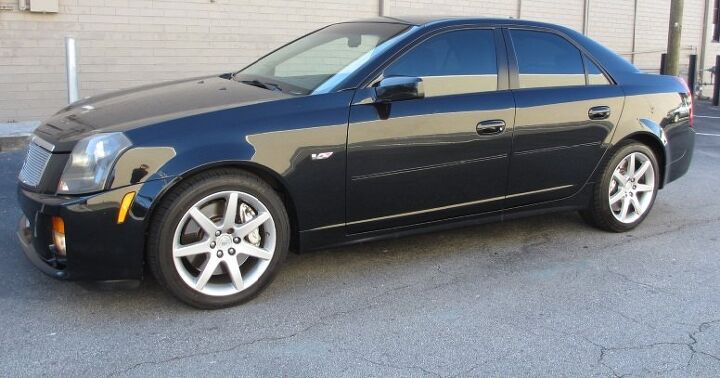



















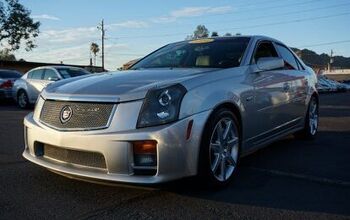
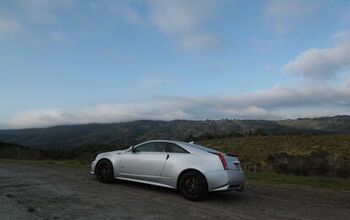
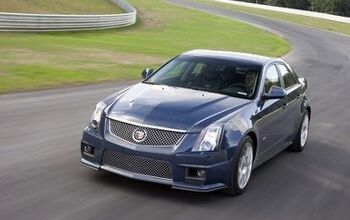
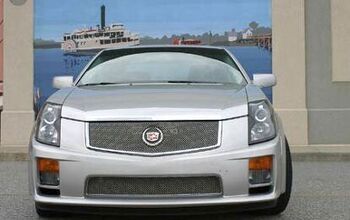











Comments
Join the conversation
According to The Matrix Reloaded - the interior cabin of the CTS is BULLETPROOF.
I can't get over FOUR PEDALS! I thought it was a general rule that all manuals have a handbrake. Sometimes, I take a step back at my own car (manual) and try to visualize what it would be like for someone who's never seen a car to try and operate it. Three pedals is bad enough, but four's gotta be mind-blowing.